In 1906, the year the city of Amsterdam bought Rembrandt’s house on Breestraat to turn it into a museum, the city of Leiden marked the house on Weddesteeg where he was born with a commemorative gable stone. Twenty-one years later the house was demolished, and today the gable stone adorns a 1960s apartment block standing in its place. Tourists wishing to tread in the steps of the master are directed to the Latin School he attended on Lockhorststraat and the studio on Langebrug where he was apprenticed to Jacob van Swanenburg, after dropping out of university at the age of 14 to become a painter.
The Museum De Lakenhal in Leiden is now compensating for the city’s past neglect of the artist, with ‘Young Rembrandt – Rising Star’ – the first exhibition to focus on the artist’s formative years, before his move to Amsterdam in the early 1630s. The show might be better titled Becoming Rembrandt. With 150 paintings, prints and drawings – starting with Peddler Selling Spectacles (Allegory of Sight) (c. 1624), in the collection of the Lakenhal – it allows us to witness the artist’s transformation from not-especially-gifted beginner into genius.
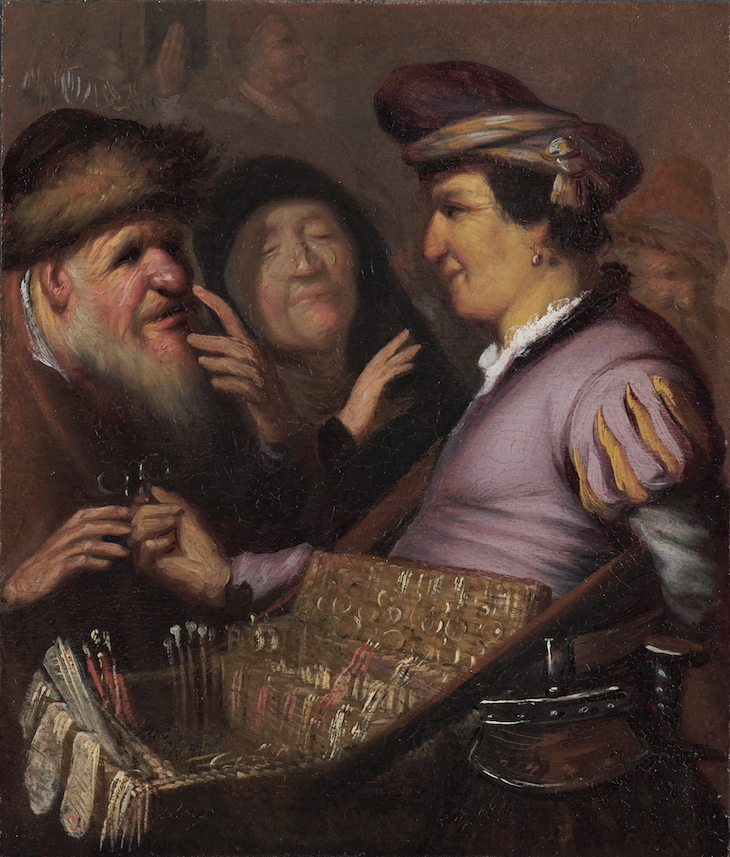
A Peddler Selling Spectacles (1624), Rembrandt van Rijn. Museum de Lakenhal, Leiden
Rembrandt was not a child prodigy like Van Dyck. By the standards of his time he was a late starter: beside the confident work of his friend Jan Lievens, who trained with Pieter Lastman in Amsterdam from the age of 10, Rembrandt’s first known paintings look amateurish. But although Lievens had a head start, Rembrandt’s years of academic schooling were not wasted: when it came to ideas for classical or biblical compositions he had the edge. The handling of paint in his first major history painting, The Stoning of Saint Stephen (1625), is a little clumsy, but the picture is packed with drama and lively details: Rembrandt may not yet have had the skills of a great painter but he had the instincts of a great cinematographer. Van Swanenburg and Lastman, with whom Rembrandt finished his studies, both caught the Caravaggist bug in Italy and passed it on to their pupil, who duly plunged half of this scene into shadow.
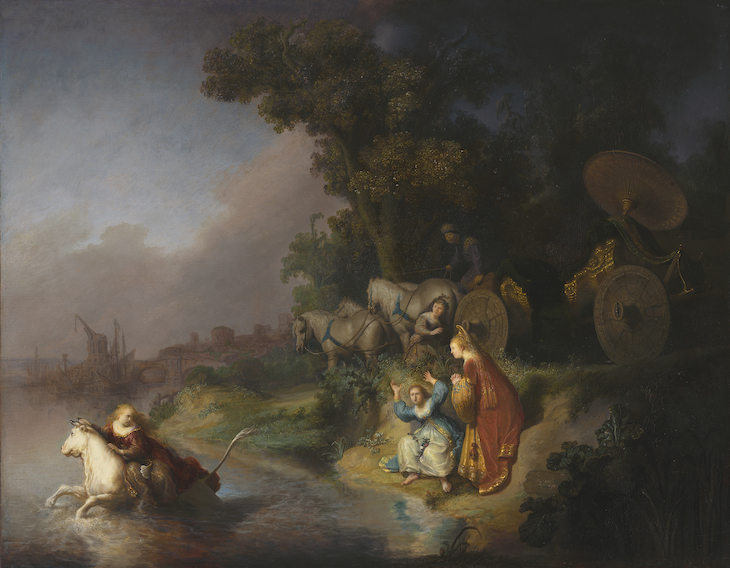
The Abduction of Europa (1632), Rembrandt van Rijn
By the time he painted The Abduction of Proserpina (c. 1630–31) and The Abduction of Europa (1632), Rembrandt had become a great director of actors: the savage way in which Proserpina claws at Pluto’s face and Europa digs her nails into the neck of the bull leaves us in no doubt that these are rapes. In the intervening years he had set himself a course of acting exercises in front of the mirror. His first self-portrait appears in the background of The Stoning of Saint Stephen, recognisable by the halo of curls and the bulbous nose; in 1628, three years after completing this painting, he began a sequence of etched self-portraits exploring the extremes of human facial expression. A selection of these miniature head studies or ‘tronies’ – frowning, smiling, snarling, goggling – hangs here on either side of two oil portraits: Rembrandt’s famous Self-portrait (c. 1628) from the Rijksmuseum, in which the artist’s plump, unprepossessing young face is almost lost in shadow, and an idealised Portrait of Rembrandt van Rijn (c. 1628) by Lievens, who tries to ennoble his friend’s appearance. It’s a lost cause. Lievens may have been the more polished painter, but Rembrandt shows himself the greater artist in finding a way to dramatise appearances without distorting them.
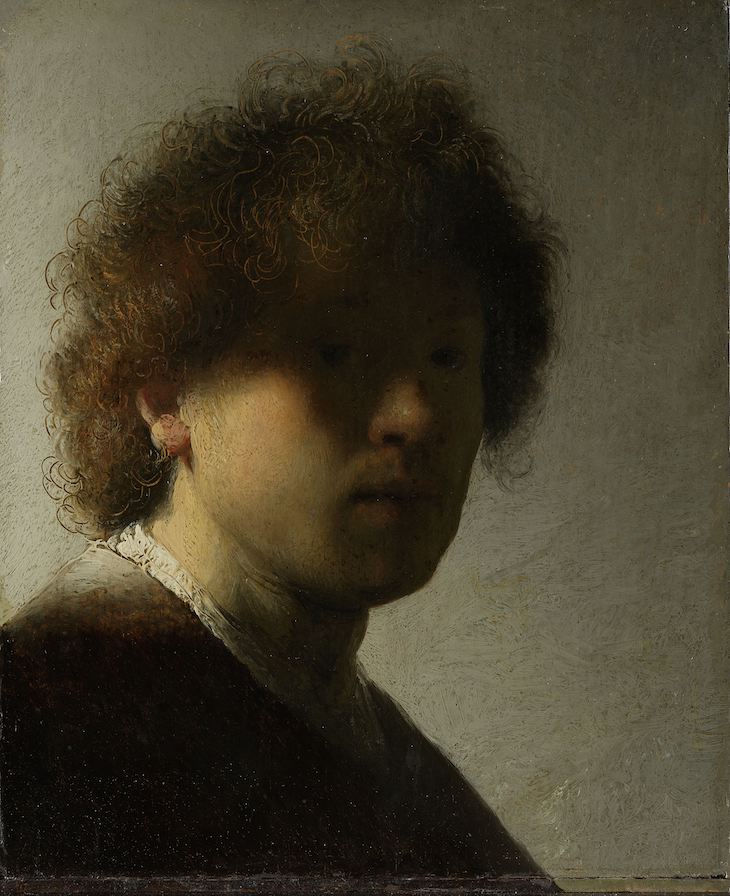
Self-Portrait (1628), Rembrandt van Rijn. Rijksmuseum, Amsterdam
In the late 1620s, Rembrandt and Lievens were making names for themselves as young artists. On a visit to Leiden in 1629 Constantijn Huygens was profoundly impressed by this ‘young and noble duo of painters’, judging Rembrandt to be ‘superior to Lievens in his sure touch and liveliness of emotions’ and singling out his tormented Judas Repentant Returning the Pieces of Silver (1629) for lavish praise. The ancient Greek painter Apelles, he declared, would never have believed such an achievement possible of ‘a youth, a Dutchman, a beardless miller’. Huygens was secretary and art adviser to Frederick Henry, Prince of Orange; at around this time, Rembrandt was commissioned to produce a series on the Passion for the stadtholder’s court. The beardless miller from Leiden was on his way: two years later, he moved to Amsterdam.
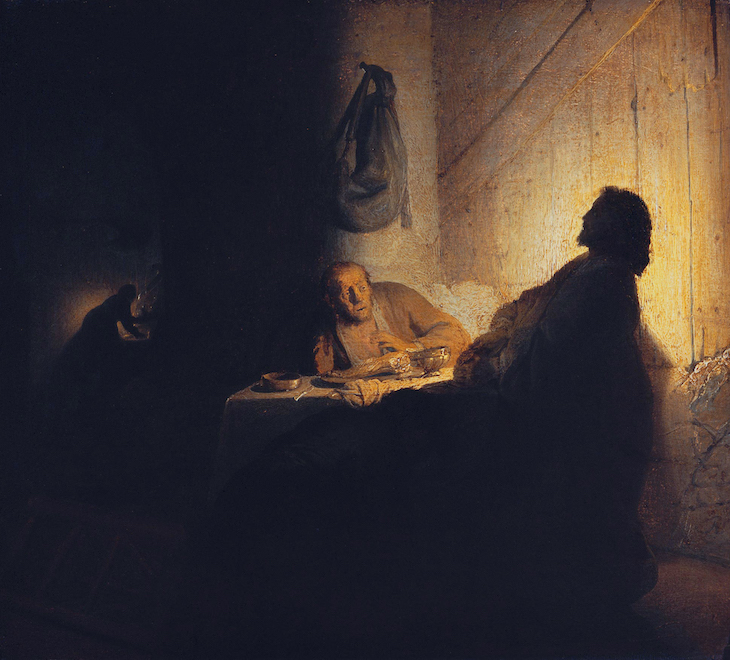
The Supper at Emmaus (c. 1628), Rembrandt van Rijn
The rather bitty division of the exhibition into 20 themes mirrors the constant chops and changes in the young artist’s work, so uneven in subject matter and quality that one can feel tempted to dispute their established chronology. Rembrandt does not advance on all fronts at once; he takes two steps forward and one step back. Around the time he paints the dazzling Supper at Emmaus (c. 1628), with its dramatic figure of Christ starkly silhouetted against the lamplight that flares up on the face of his terrified disciple, he reverts to the comedic genre of his Spectacles Seller in the drably indifferent The Foot Operation (1628).
Thomas Edison’s famous observation that genius is one per cent inspiration and 99 per cent perspiration is as true of artists as of inventors. In demolishing the myth of the born genius, this unusually honest exhibition tells the unvarnished truth about Rembrandt. I think he would have approved.
‘Young Rembrandt – Rising Star’ is at the Museum de Lakenhal Leiden until 9 February 2020.
Unlimited access from just $16 every 3 months
Subscribe to get unlimited and exclusive access to the top art stories, interviews and exhibition reviews.

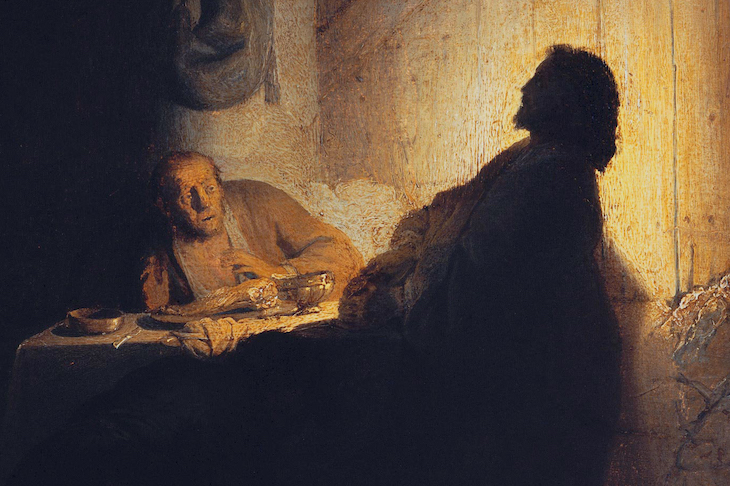

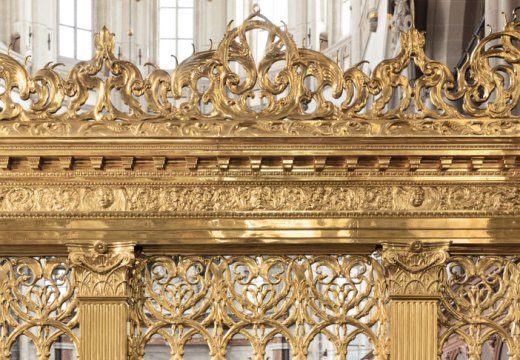
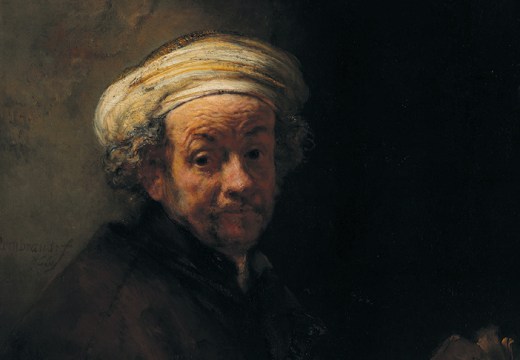









![Masterpiece [Re]discovery 2022. Photo: Ben Fisher Photography, courtesy of Masterpiece London](http://www.apollo-magazine.com/wp-content/uploads/2022/07/MPL2022_4263.jpg)
It’s time for the government of London to return to its rightful home